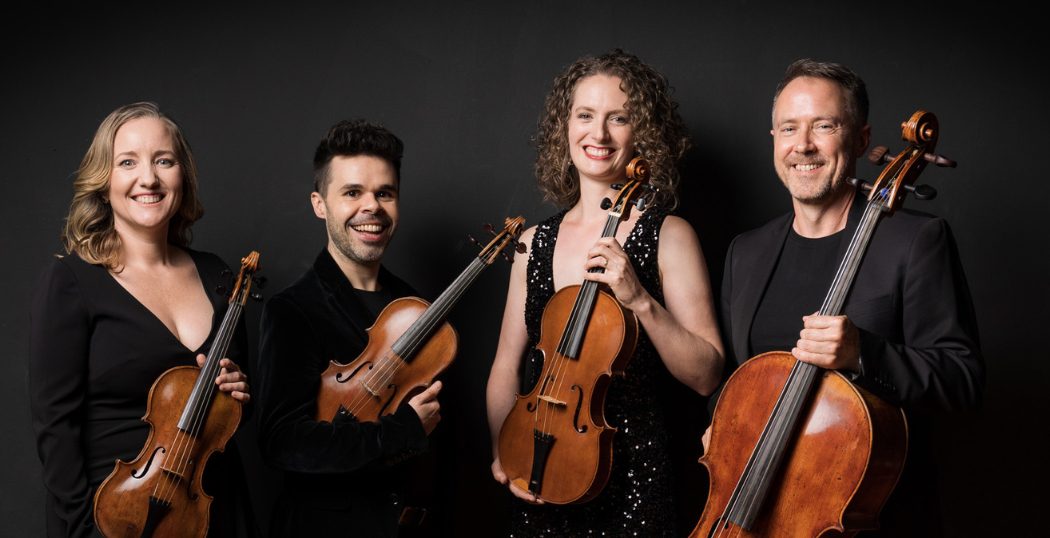Despite the title of this concert program, the focus of the concert was not entirely on Haydn and Mendelssohn – representing, respectively, the Classical and the Romantic. Starting it off was an arrangement of Bach’s Art of Fugue for string quartet. This wisely introduced what was to be a theme running throughout each of the three pieces in this program – the use of the fugue as a musical form.
Gustav Leonhardt set forth his career by arguing, in his Master’s thesis, that Bach’s Art of Fugue was originally intended for performance on the clavier. That may be so. But the Australian Haydn Ensemble showed that Bach’s final masterpiece shines just as brightly in the hands of a string quartet. It allows for a clear separation and articulation of each voice. In Contrapunctus I we see each member of the quartet develop a personality of their own. Skye McIntosh on violin begins starkly with an annunciation of the theme, Mathew Greco on violin and Karina Schmitz on viola engage in thoughtful dialogue, and Daniel Yeadon on cello grounds the quartet in a sombre yet resounding voice. The unity of the voices is made only more apparent when the ensemble ceases abruptly to declare those three lone chords with dramatic effect. Here one could hear the earthy shriek of McIntosh’s violin played sotto voce.
Contrapunctus II is often taken to be ‘jazzy’ counterpoint, for its dotted rhythms. The ensemble here gave it a more stately tempo, perhaps in contemplation of the ‘stylo francesce’ (or manner of the French overture) Bach might have had in mind. That is not to say that this rendition was not lively. Yeadon performed the often-rambling and jumpy cello passages in a way that made it sing, and McIntosh interspersed light trills throughout, for dramatic effect. Much the same could be said of contrapunti 3 and 4, but it is perhaps unfortunate that the ensemble did not perform the fifth, stretto, fugue, the liveliness of which would have suited this ensemble well.
The first movement of Haydn’s String Quartet in A major (‘the Sun’) brought a light bit of whimsy into the Utzon Room. The Allegro di molto e scherzando is replete with turns for violin, which sometimes came across as rather forced or methodical, but the ensemble did well in pulling off vast dynamic contrasts. In the Adagio, McIntosh sings with a lulling cantabile for violin, as though it were an opera aria. The Trio in the third movement is a moment to behold. Marked sopra una corda, it brought out the earthy timbre of each string. Haydn chose the final movement to be a fugue. The theme is delightfully nostalgic, as though looking happily upon the past three movements. This the ensemble realised, and they drew the audience in to concentrate, albeit with ease and fondness, on every detail of Haydn’s technical ingenuity.
The first few bars of Mendelssohn’s String Quartet No 2 in A minor set the scene for what was to follow. The dynamic contrasts are stark, between pianissimo and forte, and McIntosh leaves the strings gliding in the air in a delightful moment between crescendo and diminution. What remains unstated, however, is that these bars are a harmonisation of one of Mendelssohn’s own song, Ist es wahr? (Is it true?), with its distinctive dotted rhythm.
Then the Romantic strain makes itself known, as the brooding wavering notes performed by Schmitz on viola break out into something of a furious soliloquy on violin. By this time, the origins of this piece in lieder are made clear. The contrast between brooding passages and outward monologues remind one of CPE Bach’s so-called ‘Hamlet’ Fantasia. Consider, for example, the final movement, a Presto. This featured the ensemble at its best. All break out into shimmering tremolos as the violin retains its cantabile element, vocalising the strains of a lovelorn heart that yearns: Ist es wahr?
